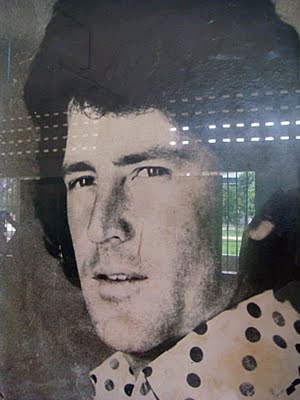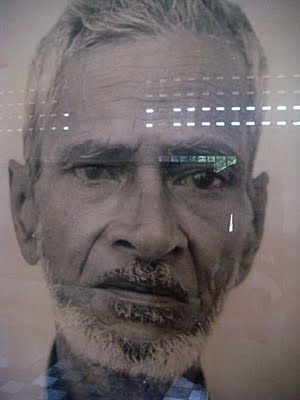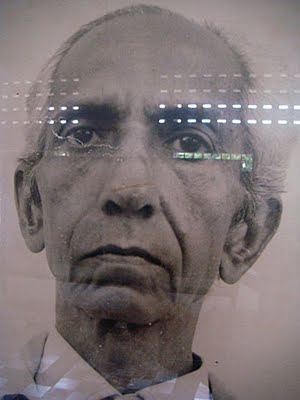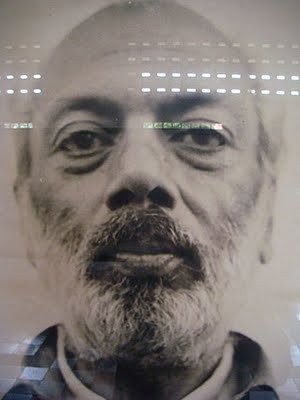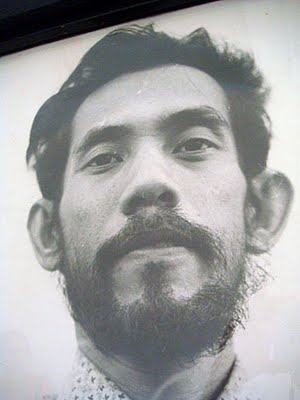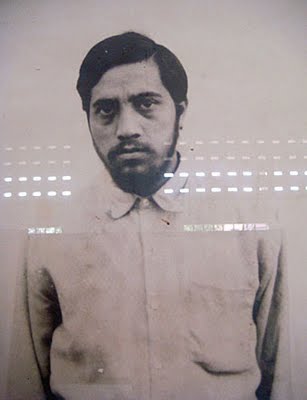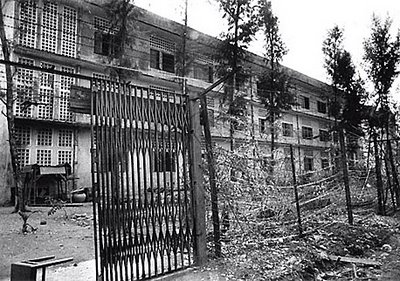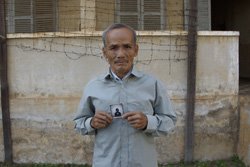Youk Chhang at the Documentation Center of Cambodia -
DC-Cam to you and me - has just sent me a copy of their planned strategic focus over the next two years to promote memory, justice and reconciliation for the victims and survivors, and their descendants, of the Khmer Rouge regime and its aftermath here in Cambodia. I've posted it here as it's worth reading the whole plan instead of any abridged version I can concoct. We must also remember that DC-Cam are providing the bulk of evidence for the ongoing Khmer Rouge Tribunal that is taking place as we speak.
I. A Physical Legacy
Building a Permanent Genocide Research Center: DC-Cam has begun to build a permanent center to expand our work and ensure a long-term commitment to human rights and genocide prevention in Cambodia. The Cambodian Ministry of Education has generously provided us with a large parcel of land in Phnom Penh for that purpose. The land, which totals nearly 4,800 square meters, is situated on the campus of the Beong Trabek High School, fittingly on the site of a former Khmer Rouge prison. We have enlisted a team of expert architects in New York to design a building complex that will house the permanent center. They are aided by architecture students from Columbia University and the Royal University of Phnom Penh’s School of Fine Arts. We plan to break ground for a new building complex in 2010.
The permanent center will be called the “Sleuk Rith Institute.” That name reflects our core objectives, as well as our Cambodian heritage. Sleuk rith are dried leaves that Cambodian religious leaders and scholars have used for centuries to document history, disseminate knowledge, and even preserve culture during periods of harsh rule. They represent both the beauty of knowledge and the power of human perseverance during times of peril. The permanent center will serve three core functions. First, it will be a physical memorial, encouraging visitors to honor and remember departed victims and all those who suffered under the Khmer Rouge regime. Secondly, the center will be an educational hub, enabling current and future generations to learn about Cambodia’s harrowing past. Education will ensure that Cambodians never forget those who unjustifiably died and suffered, and it will empower them to prevent similar abuses in the future. Finally, the center will be a hub for research, seeking to become the leading Asian institution focused on genocide studies, one that will be connected to leading scholars and other institutions throughout Asia and the wider world.
II. A Legacy of Memory
Genocide Education in Cooperation with the Ministry of Education: Genocide education is crucial if Cambodians are to preserve their history and remember those who perished under Khmer Rouge brutality. Education is also essential if Cambodians are to understand why and how the genocide happened, appreciate the effects of the tragedy, and address the many continuing challenges that flow from the genocide. DC-Cam is currently in the process of working with the Ministry of Education and academic experts to establish a core curriculum on genocide and other crimes against humanity, which will be introduced to Cambodian classrooms at the end of 2009. Together with local and international experts, we are providing in-depth training to 24 Cambodian officials, who will serve as leaders in genocide education. They, in turn, will train 185 educators to lead efforts in various districts throughout Cambodia. We will also host roughly 3,000 secondary school teachers from around the country for shorter basic training programs.
Our curriculum and training program will revolve around DC-Cam’s history textbook The History of Democratic Kampuchea. Our textbook has received plaudits from around the country and the world. It is the first of its kind, educating Cambodian youths about the Khmer Rouge tragedy after three decades of relative silence on the subject in Cambodia’s schools. It is also available in digital format on the Internet, therefore reaching a global audience. Genocide education is a key to liberating the victims of Khmer Rouge terror and transforming them into leaders in the global quest for human rights and dignity. Our work with the Department of Education has received wide international acclaim and support, including from the US Agency for International Development; the governments of Sweden, Norway, Denmark, Germany, and Belgium; the open Society Institute, and the U.S.-based National Endowment for Democracy.
Remembering the Victims of Democratic Kampuchea: DC-Cam also plans to compile and publish a book of names of all those known to have died under the Khmer Rouge regime. The compendium will be based on our research and will tangibly recognize and remember those who perished. To date, there are more than a million names in our databases. New names and related information are still being added. The book will be distributed to every commune in Cambodia and placed in the commune’s office, which will give current and future generations a concrete memorial dedicated to those victims who died. The compendium will also allow families and future generations to be able to trace their family history, a search that for many is still not over. To reach the larger global community, we will post an electronic version online.
III. A Legacy of Justice
Making Our Documents Available Worldwide: Another way DC-Cam will promote memory and justice, at home and abroad, is to digitize over 900 reels of microfilmed documents from our archives. We are now working with Rutgers University in Newark, New Jersey and the Center for Research Libraries to bring about that important goal and make our impressive collection accessible via the internet. Doing so will allow scholars, journalists, media, government and international officials, ordinary Cambodian citizens, and members of the diaspora to conduct effective research on the genocide. Toward that end, we also maintain strong collaboration with the Tuol Sleng Genocide Museum.
Examining Crimes by Lower-Level Khmer Rouge Officials: A further goal of our work is to expand the legacy of justice underway at the Extraordinary Chambers in the Court of Cambodia. DC-Cam plans to conduct a study relating to the crimes committed by lower ranking Khmer Rouge cadres. The study will trace various abuses that occurred under the Khmer Rouge regime, looking into the less-researched area of crimes by lower-level members of the regime. In fact, DC-Cam has conducted thousands of interviews of former Khmer Rouge officials and cadres since 2001, with support from the Ministry of the Interior. The study will provide victims, some of whom may feel disconnected from the ongoing criminal process upcoming tribunals, with an opportunity to testify about their own experiences, and thus come to terms with their past. Like South Africa’s Truth and Reconciliation Commission, the study hopes to focus not on placing blame on particular individuals, but rather giving victims a chance to speak and be heard–a crucial step towards national reconciliation and justice.
Commemorating Key Human Rights Laws: Finally, DC-Cam will seek approval from the Royal Government of Cambodia to convene a forum commemorating the passage of key human rights laws. In particular, we intend to highlight the Genocide Convention, the watershed treaty that condemned and prohibited genocide sixty years ago. We also intend to draw attention to the recent ASEAN Human Rights Convention. We hope to lead a forum in collaboration with the Cambodian government, which adopted the Genocide Convention in 1950 and signed the ASEAN Human Rights Convention on December 10, 2008. The former represents one of the bedrocks of modern international human rights law, while the latter expresses a renewed regional commitment to basic human rights and dignity.
The proposed forum will include local and international participants and serve to illuminate the critical continuing need to promote human rights and prevent genocide, in Cambodia and beyond. We hope that the forum will also establish a community of scholars, advocates, officials, and others from inside and outside of Cambodia to carry on that mission. DC-Cam aims to serve as a principal hub in Asia to ensure that atrocities like those in Democratic Kampuchea never happen again.
Labels: DC Cam, Youk Chhang
